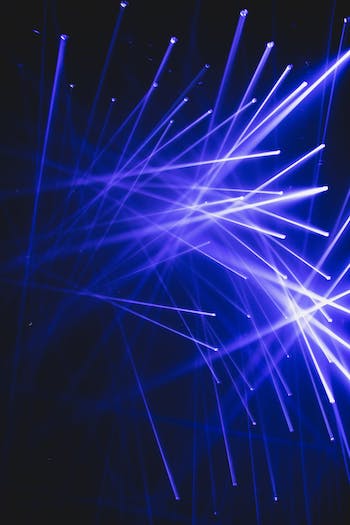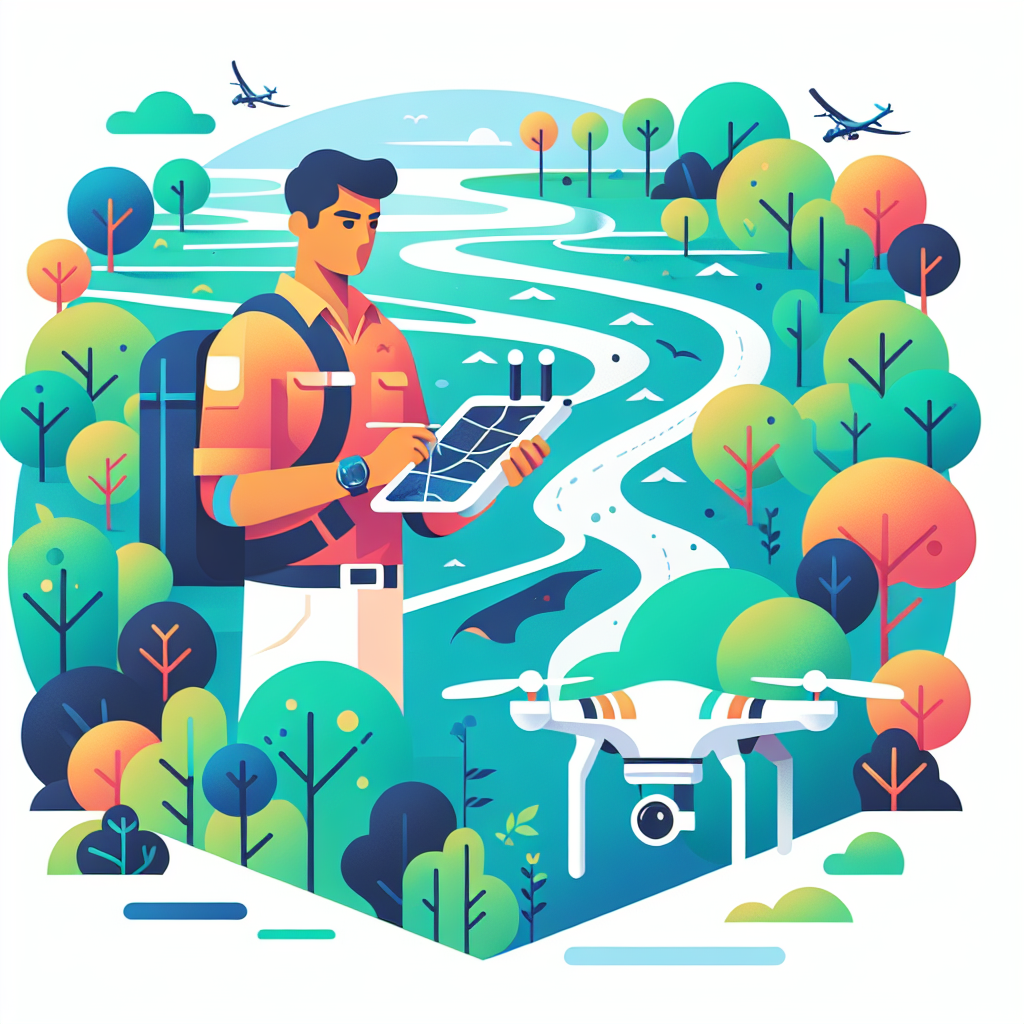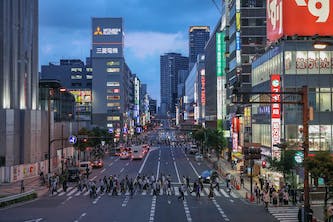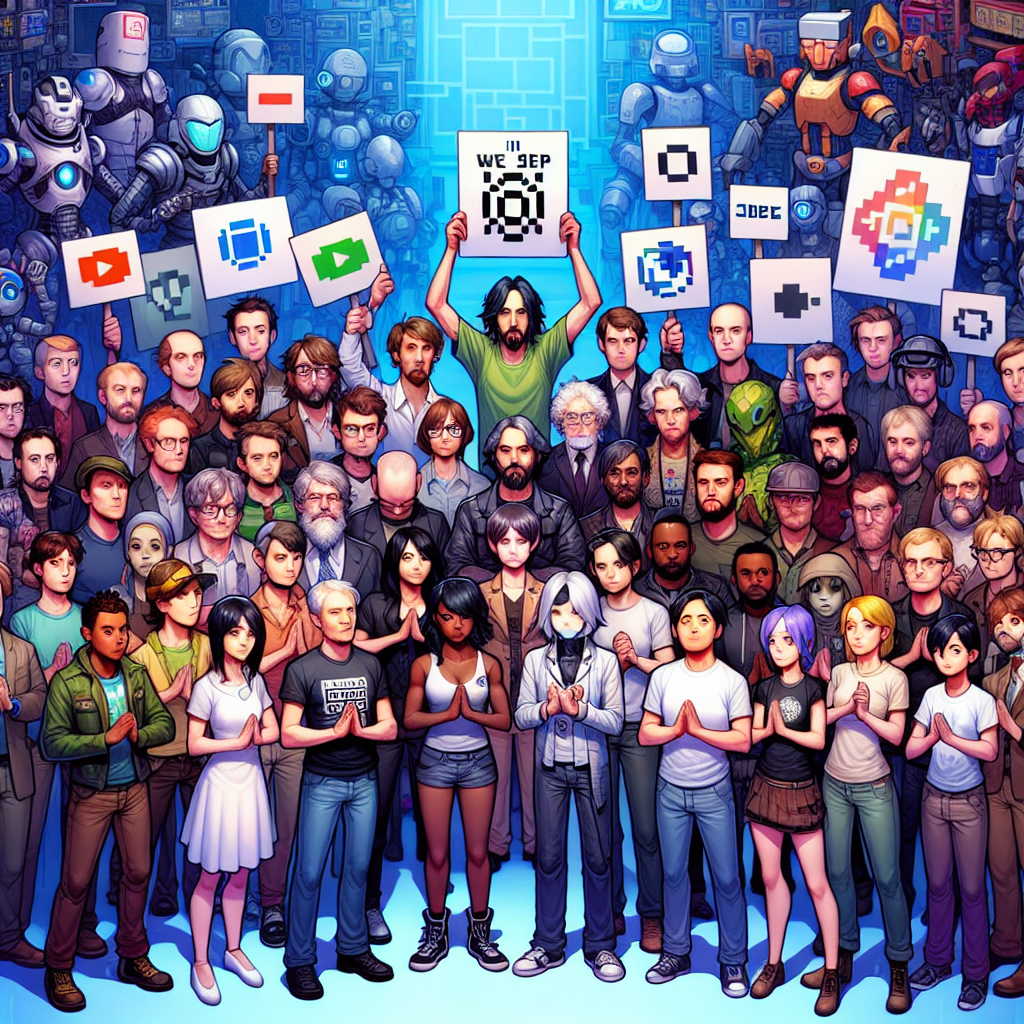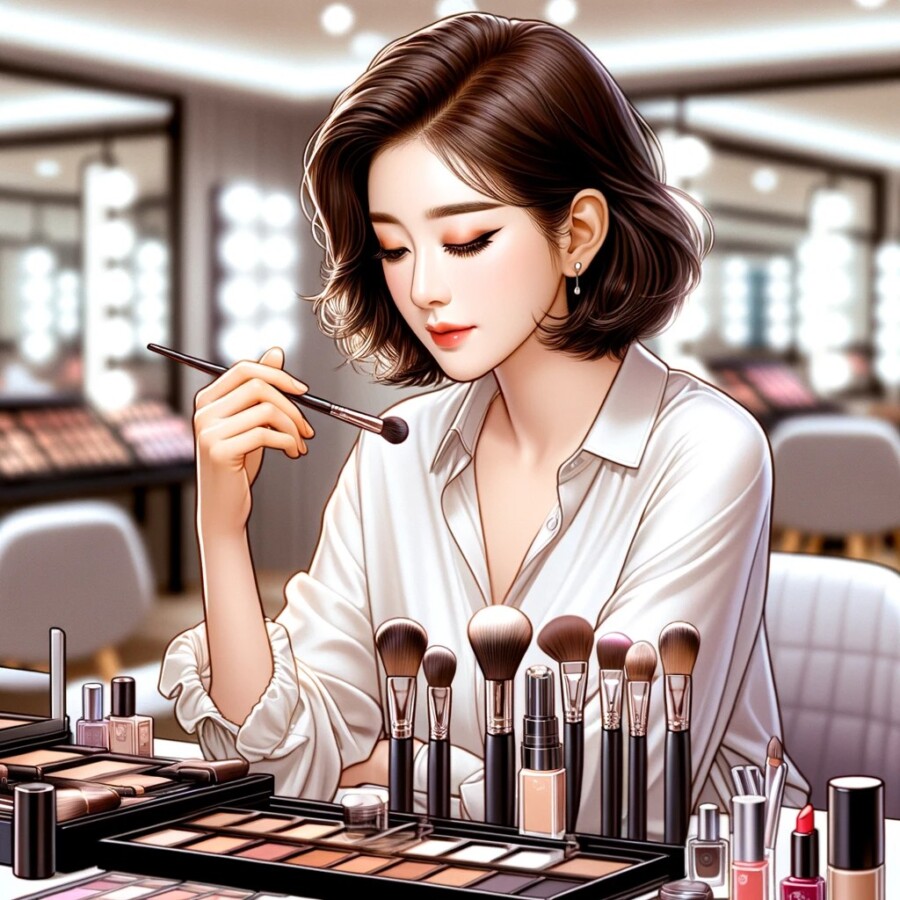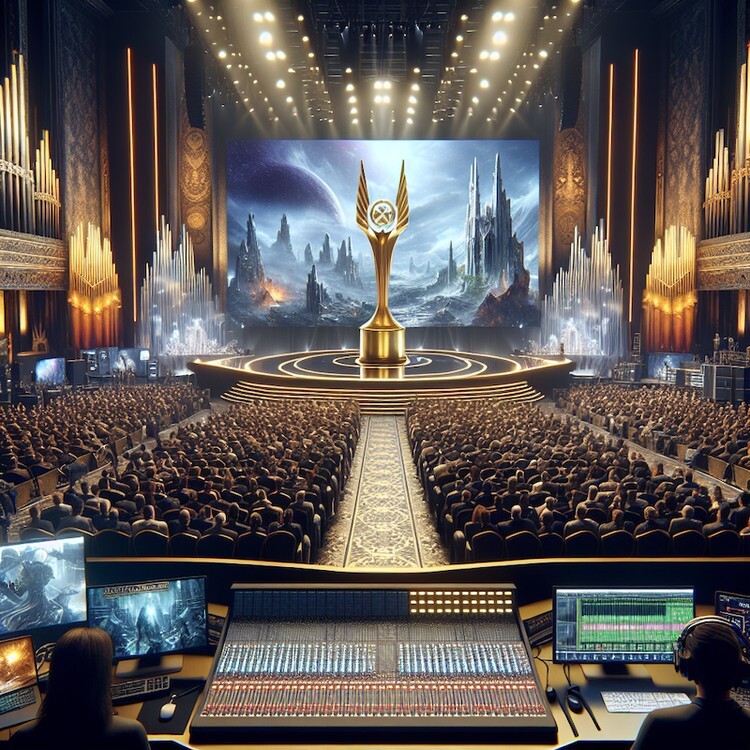Blue LEDs have revolutionized the world of lighting and visual entertainment. These powerful LEDs were only invented in the 1990s and have since become a staple in stadiums, landmarks, and even the Las Vegas Sphere. The use of light-emitting diodes (LEDs) has allowed for the creation of vibrant and dynamic light shows that enhance the spectator experience. LED technology has come a long way since its early days, when it was dismissed as ineffective. Engineers have been able to produce LEDs that emit more light, making them suitable for large-scale applications like stadiums.
The development of blue LEDs was particularly challenging due to the difficulty in manufacturing the required material, gallium nitride, without defects. However, blue LEDs are essential for creating other colors in displays and are also used as the basis for white lights. Researchers are constantly working on improving LED technology, with scientists at Stanford University experimenting with LEDs made from perovskite crystals. These LEDs are cheap, easy to make, and can be tuned to desired colors. However, stability remains an issue that needs to be overcome.
In Japan, researchers have developed a blue LED that can be powered by a single AA battery, requiring only 1.47 volts instead of the usual 4 volts. This achievement was made possible by encouraging excited states within the LED to combine and produce light more efficiently. LED technology is also being explored for virtual reality and augmented reality devices, where extremely bright LEDs are needed for clear images. Companies are working on developing micro LEDs that are significantly smaller than current LEDs, allowing for even more compact and efficient devices.
LED technology continues to evolve, with researchers constantly pushing the boundaries of what is possible. There is still room for growth and improvement in the field of LEDs, and their potential applications are vast. From stadiums to landmarks to personal devices, LEDs have transformed the way we experience light and visual entertainment.
Original news source: The incredible power of blue LEDs (BBC)
Listen
Slow
Normal
Fast
Group or Classroom Activities
Warm-up Activities:
– News Summary
Instructions: Ask students to read the article and write a brief summary of the main points. They should focus on capturing the key information and condensing it into a few sentences. After they have finished, have them compare their summaries with a partner and discuss any differences or similarities.
– Opinion Poll
Instructions: Divide the class into pairs or small groups. Ask each group to come up with a question related to the article that they can ask their classmates. The question should be something that elicits an opinion or personal response. Once the questions are prepared, have each group take turns asking their question to the rest of the class. Encourage discussion and debate around the different opinions shared.
– Word Association
Instructions: Provide the class with a list of words related to the article, such as “LEDs,” “lighting,” “technology,” “innovation,” etc. Have students take turns saying a word from the list and then quickly saying the first word that comes to mind. This can be done in a rapid-fire manner, with each student taking turns as quickly as possible. Encourage them to make connections between the words and discuss their associations.
– Sketch It
Instructions: Divide the class into pairs. Give each pair a whiteboard or a piece of paper and a marker. Ask one student in each pair to describe a scene or image related to the article while the other student tries to draw it based on the description. After a set amount of time, have the pairs switch roles. Once both students have had a chance to describe and draw, have them compare their drawings and discuss any differences or similarities.
– Future Predictions
Instructions: Ask students to imagine how LED technology could continue to evolve in the future. Have them write down their predictions and discuss them with a partner. Encourage them to think creatively and consider potential applications and advancements in LED technology. After the discussion, ask a few pairs to share their predictions with the class.
Comprehension Questions:
1. When were blue LEDs invented and what impact have they had on lighting and visual entertainment?
2. What is the significance of blue LEDs in creating other colors in displays and as the basis for white lights?
3. What challenges did engineers face in developing blue LEDs and how have they been overcome?
4. What are perovskite crystals and how are they being used in LED technology?
5. How have researchers in Japan improved the efficiency of blue LEDs?
6. How is LED technology being explored for virtual reality and augmented reality devices?
7. What are micro LEDs and how are they different from current LEDs?
8. How has LED technology transformed the way we experience light and visual entertainment?
Go to answers ⇩
Listen and Fill in the Gaps:
Blue LEDs have revolutionized the world of lighting and visual (1)______. These powerful LEDs were only invented in the 1990s and have since become a staple in stadiums, (2)______, and even the Las Vegas Sphere. The use of light-emitting diodes (LEDs) has (3)______ for the creation of vibrant and dynamic light shows that enhance the spectator experience. LED technology has come a long way since its early days, when it was dismissed as ineffective. Engineers have been able to (4)______ LEDs that emit more light, making them suitable for large-scale applications like stadiums.
The development of blue LEDs was particularly challenging due to the difficulty in manufacturing the required (5)______, gallium nitride, without (6)______. However, blue LEDs are essential for creating other colors in displays and are also used as the basis for (7)______ lights. Researchers are constantly working on improving LED technology, with scientists at Stanford University experimenting with LEDs made from (8)______ crystals. These LEDs are cheap, easy to make, and can be tuned to desired (9)______. However, stability remains an issue that needs to be overcome.
In Japan, researchers have (10)______ a blue LED that can be powered by a single AA (11)______, (12)______ only 1.47 volts instead of the usual 4 volts. This achievement was made possible by encouraging excited states within the LED to combine and produce light more efficiently. LED technology is also being explored for virtual reality and augmented reality devices, where extremely bright LEDs are needed for (13)______ images. Companies are working on developing micro LEDs that are significantly smaller than current LEDs, (14)______ for even more (15)______ and efficient devices.
LED technology continues to evolve, with researchers constantly pushing the boundaries of what is possible. There is still room for growth and improvement in the field of LEDs, and their potential (16)______ are vast. From stadiums to landmarks to personal devices, LEDs have transformed the way we experience light and visual entertainment.
Go to answers ⇩
Discussion Questions:
Students can ask a partner these questions, or discuss them as a group.
1. What is your opinion on the use of blue LEDs in lighting and visual entertainment?
2. How would you feel if all the stadiums and landmarks in your city were lit up with vibrant and dynamic light shows using LED technology?
3. Do you like the idea of using LED technology for virtual reality and augmented reality devices? Why or why not?
4. Do you think LED technology has had a significant impact on the way we experience light and visual entertainment? Why or why not?
5. How do you think the development of blue LEDs has revolutionized the world of lighting?
6. What is your experience with LED lights? Have you used them in your home or seen them in public spaces?
7. Do you think LED technology will continue to evolve and improve in the future? Why or why not?
8. What are some potential applications of LED technology that you can think of, beyond lighting and visual entertainment?
9. How important do you think it is for researchers to continue pushing the boundaries of LED technology?
10. What do you think are the advantages and disadvantages of using LEDs made from perovskite crystals?
11. How would you feel if all the light bulbs in your home were replaced with LED lights? Why?
12. Do you think LED technology will eventually replace traditional lighting methods? Why or why not?
13. What is your opinion on the use of extremely bright LEDs in virtual reality and augmented reality devices?
14. How do you think the development of micro LEDs could impact the design and functionality of personal devices?
15. What potential challenges or limitations do you see for the future of LED technology? Why?
Individual Activities
Vocabulary Meanings:
Match each word to its meaning.
Words:
1. LEDs
2. invention
3. material
4. researchers
5. technology
6. growth
7. applications
8. experience
Meanings:
(a) The process of increasing or developing
(b) Substance or matter used to create something
(c) The way in which something is perceived or encountered
(d) The act of creating or producing something new
(e) Light-emitting diodes
(f) The use of scientific knowledge for practical purposes
(g) Ways in which something can be used or applied
(h) People who conduct scientific or academic research
Go to answers ⇩
Multiple Choice Questions:
1. When were blue LEDs invented?
(a) 1980s
(b) 1970s
(c) 1990s
(d) 1960s
2. What material is required to manufacture blue LEDs?
(a) Silicon
(b) Copper
(c) Aluminum
(d) Gallium nitride
3. What are blue LEDs used as the basis for?
(a) Red lights
(b) White lights
(c) Green lights
(d) Yellow lights
4. What are researchers at Stanford University experimenting with for LED technology?
(a) Perovskite crystals
(b) Silicon crystals
(c) Copper crystals
(d) Aluminum crystals
5. How many volts does the blue LED developed in Japan require?
(a) 4 volts
(b) 2 volts
(c) 3 volts
(d) 1.47 volts
6. What are micro LEDs?
(a) Significantly larger than current LEDs
(b) The same size as current LEDs
(c) Significantly smaller than current LEDs
(d) More efficient than current LEDs
7. What are LEDs being explored for in virtual reality and augmented reality devices?
(a) Sound effects
(b) Clear images
(c) Haptic feedback
(d) Motion tracking
8. What has LED technology transformed?
(a) The way we experience light and visual entertainment
(b) The way we communicate
(c) The way we travel
(d) The way we eat
Go to answers ⇩
True or False Questions:
1. Japanese researchers have not developed a blue LED that can be powered by a single AA battery, requiring only 1.47 volts instead of the usual 4 volts.
2. Manufacturing blue LEDs has been challenging due to difficulties in producing the required material, gallium nitride, without defects.
3. LED technology has advanced significantly since its early days and is now suitable for large-scale applications.
4. Companies are not working on developing micro LEDs that are significantly smaller than current LEDs, allowing for even more compact and efficient devices.
5. Researchers at Stanford University are experimenting with LEDs made from perovskite crystals, which are cheap, easy to make, and can be tuned to desired colors.
6. LED technology is not being explored for virtual reality and augmented reality devices, where extremely bright LEDs are not needed for clear images.
7. Blue LEDs are essential for creating other colors in displays and are also used as the basis for white lights.
8. Blue LEDs were not invented in the 1990s and have not become widely used in stadiums, landmarks, and entertainment venues.
Go to answers ⇩
Write a Summary:
Write a summary of this news article in two sentences.
Check your writing now with the best free AI for English writing!
Writing Questions:
Answer the following questions. Write as much as you can for each answer.
Check your answers with our free English writing assistant!
1. What is the significance of blue LEDs in the world of lighting and visual entertainment?
2. How have engineers been able to improve the effectiveness of LEDs for large-scale applications?
3. What challenges were faced in the development of blue LEDs?
4. What are perovskite crystals and how are they being used in LED technology?
5. What are some potential future applications for LED technology?
Answers
Comprehension Question Answers:
1. Blue LEDs were invented in the 1990s and have had a significant impact on lighting and visual entertainment. They have revolutionized the creation of vibrant and dynamic light shows in stadiums, landmarks, and entertainment venues.
2. Blue LEDs are essential for creating other colors in displays because they can be combined with red and green LEDs to produce a full range of colors. Additionally, blue LEDs are used as the basis for white lights by combining them with a yellow phosphor coating.
3. Engineers faced challenges in developing blue LEDs due to the difficulty in manufacturing the required material, gallium nitride, without defects. This was overcome through advancements in crystal growth techniques and the development of new processes for producing high-quality gallium nitride.
4. Perovskite crystals are a type of crystal structure that can be used in LED technology. They are cheap and easy to make, and their properties can be tuned to produce desired colors. Researchers at Stanford University are experimenting with using perovskite crystals to create LEDs with improved efficiency and color stability.
5. Researchers in Japan have improved the efficiency of blue LEDs by encouraging excited states within the LED to combine and produce light more efficiently. This has allowed the blue LED to be powered by a single AA battery, requiring only 1.47 volts instead of the usual 4 volts.
6. LED technology is being explored for virtual reality and augmented reality devices because extremely bright LEDs are needed for clear images. By using LEDs with high brightness and color accuracy, virtual and augmented reality experiences can be enhanced.
7. Micro LEDs are significantly smaller than current LEDs and are being developed for more compact and efficient devices. They offer higher pixel density, better energy efficiency, and improved color accuracy compared to traditional LEDs. Micro LEDs have the potential to be used in applications such as wearable devices, smartwatches, and displays.
8. LED technology has transformed the way we experience light and visual entertainment by providing vibrant and dynamic lighting options. LED lights are now commonly used in stadiums, landmarks, and entertainment venues to create immersive and engaging experiences. Additionally, LED technology has allowed for the development of more energy-efficient and durable lighting solutions for personal devices and everyday use.
Go back to questions ⇧
Listen and Fill in the Gaps Answers:
(1) entertainment
(2) landmarks
(3) allowed
(4) produce
(5) material
(6) defects
(7) white
(8) perovskite
(9) colors
(10) developed
(11) battery
(12) requiring
(13) clear
(14) allowing
(15) compact
(16) applications
Go back to questions ⇧
Vocabulary Meanings Answers:
1. LEDs
Answer: (e) Light-emitting diodes
2. invention
Answer: (d) The act of creating or producing something new
3. material
Answer: (b) Substance or matter used to create something
4. researchers
Answer: (h) People who conduct scientific or academic research
5. technology
Answer: (f) The use of scientific knowledge for practical purposes
6. growth
Answer: (a) The process of increasing or developing
7. applications
Answer: (g) Ways in which something can be used or applied
8. experience
Answer: (c) The way in which something is perceived or encountered
Go back to questions ⇧
Multiple Choice Answers:
1. When were blue LEDs invented?
Answer: (c) 1990s
2. What material is required to manufacture blue LEDs?
Answer: (d) Gallium nitride
3. What are blue LEDs used as the basis for?
Answer: (b) White lights
4. What are researchers at Stanford University experimenting with for LED technology?
Answer: (a) Perovskite crystals
5. How many volts does the blue LED developed in Japan require?
Answer: (d) 1.47 volts
6. What are micro LEDs?
Answer: (c) Significantly smaller than current LEDs
7. What are LEDs being explored for in virtual reality and augmented reality devices?
Answer: (b) Clear images
8. What has LED technology transformed?
Answer: (a) The way we experience light and visual entertainment
Go back to questions ⇧
True or False Answers:
1. Japanese researchers have not developed a blue LED that can be powered by a single AA battery, requiring only 1.47 volts instead of the usual 4 volts. (Answer: False)
2. Manufacturing blue LEDs has been challenging due to difficulties in producing the required material, gallium nitride, without defects. (Answer: True)
3. LED technology has advanced significantly since its early days and is now suitable for large-scale applications. (Answer: True)
4. Companies are not working on developing micro LEDs that are significantly smaller than current LEDs, allowing for even more compact and efficient devices. (Answer: False)
5. Researchers at Stanford University are experimenting with LEDs made from perovskite crystals, which are cheap, easy to make, and can be tuned to desired colors. (Answer: True)
6. LED technology is not being explored for virtual reality and augmented reality devices, where extremely bright LEDs are not needed for clear images. (Answer: False)
7. Blue LEDs are essential for creating other colors in displays and are also used as the basis for white lights. (Answer: True)
8. Blue LEDs were not invented in the 1990s and have not become widely used in stadiums, landmarks, and entertainment venues. (Answer: False)
Go back to questions ⇧



